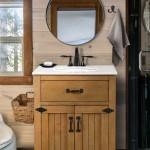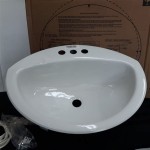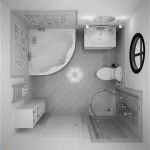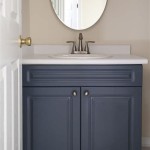Bathroom Countertop Basin Sinks: A Comprehensive Guide
Bathroom countertop basin sinks, also known as vessel sinks, have become increasingly popular in recent years due to their stylish designs and versatility. They sit on top of the bathroom counter, creating a modern and elegant look. This article provides a comprehensive guide to understanding the various aspects of countertop basin sinks, from material selection to installation considerations.
Material Selection for Countertop Basins
The material of a countertop basin significantly impacts its durability, aesthetics, and maintenance requirements. Several popular options are available, each with its own unique characteristics:
- Ceramic: Ceramic is a classic choice, offering a balance of affordability, durability, and ease of cleaning. It is resistant to scratches and stains, making it suitable for high-traffic bathrooms.
- Porcelain: Porcelain is a type of ceramic fired at higher temperatures, making it even more durable and resistant to chipping and cracking. It offers a sleek, high-end look.
- Glass: Glass basins create a contemporary and minimalist aesthetic. Tempered glass is commonly used for its strength and resistance to shattering. Glass basins require regular cleaning to maintain their transparency.
- Stone: Stone basins, such as marble, granite, or onyx, add a touch of luxury and natural beauty to the bathroom. They are durable but require sealing to prevent staining and water damage.
- Metal: Metal basins, such as copper, stainless steel, or brass, offer a unique and stylish look. Copper develops a patina over time, adding character, while stainless steel provides a modern and hygienic surface.
- Composite Materials: Composite materials, such as resin and quartz, offer a wide range of colors and designs. They are durable, non-porous, and easy to clean, making them a practical and stylish choice.
Shapes and Sizes of Countertop Basins
Countertop basins are available in a wide variety of shapes and sizes, allowing for customization based on bathroom space and design preferences.
- Round: Round basins are a classic choice, offering a timeless and versatile look. They are available in various diameters to suit different counter sizes.
- Oval: Oval basins provide a softer, more elongated shape, suitable for larger countertops.
- Square/Rectangular: Square and rectangular basins offer a modern and geometric aesthetic, complementing contemporary bathroom designs.
- Unique Shapes: Many manufacturers offer basins in unique and artistic shapes, allowing for a personalized and distinctive touch.
Installation of Countertop Basins
Proper installation is crucial for the functionality and longevity of a countertop basin. Key considerations include:
- Countertop Compatibility: Ensure the countertop material and thickness can support the weight of the basin.
- Faucet Compatibility: Choose a faucet designed for use with a countertop basin, considering height and spout reach.
- Plumbing Considerations: Ensure proper plumbing connections for water supply and drainage.
- Sealing: Properly seal the basin to the countertop to prevent water damage.
Maintenance and Cleaning of Countertop Basins
Regular cleaning is essential to maintain the appearance and hygiene of countertop basins. Specific cleaning methods vary depending on the material:
- Ceramic and Porcelain: Mild soap and water are generally sufficient for cleaning.
- Glass: Glass cleaners can be used, but avoid abrasive cleaners that may scratch the surface.
- Stone: Use pH-neutral cleaners specifically designed for stone to prevent damage.
- Metal: Follow manufacturer recommendations for cleaning specific metal types.
- Composite Materials: Most composite materials can be cleaned with mild soap and water.
Choosing the Right Faucet for a Countertop Basin
Faucet selection is an important aspect of countertop basin installation. Consider the following factors:
- Height: Choose a faucet with sufficient height to accommodate the basin's depth.
- Spout Reach: Ensure the spout reaches the center of the basin to prevent splashing.
- Style: Select a faucet style that complements the overall bathroom design.
Advantages of Countertop Basins
Countertop basins offer several advantages over traditional undermount or drop-in sinks:
- Stylish Design: They create a focal point in the bathroom and add a touch of modern elegance.
- Increased Counter Space: By sitting on top of the counter, they free up space underneath.
- Easy Installation: Installation is generally simpler than undermount sinks.
- Variety of Styles and Materials: A wide range of options allows for customization to suit individual preferences.
Considerations Before Purchasing
Before purchasing a countertop basin, consider these important factors:
- Budget: Countertop basins range in price depending on the material and design.
- Bathroom Size and Layout: Ensure the basin size is proportionate to the bathroom space.
- Maintenance Requirements: Consider the cleaning and upkeep required for different materials.
- Overall Design Aesthetic: Choose a basin that complements the existing or desired bathroom style.

Large Oval Stone Resin Countertop Basin 600mm Pure White Kuro

19 Best Countertop Basin Ideas Bathroom Design Small

Complete Buyers Guide To Countertop Bathroom Basins

Banksy Stone Counter Top Basin 560 The Luxury Bath Company

Countertop Basins An Essential Guide Before You Buy Drench

300mm Surface Mounted Round Ceramic Stabia Counter Top Basin

Monaco Cloakroom Countertop Basin  38 Buy At Bathroom City

Livingandhome White Oval Ceramic Bathroom Counter Top Basin Sink W 480mm X D 320mm Diy At B Q

Top Basin Countertop Nt3155 Ceramic 58 X 38 5 Cm

Ceramic Unique W B Wash Basin Bathroom Vessel Sink Above Countertop Bowl Lavatory Remodeling Vanity Glossy Stand
Related Posts







